The other day a friend told me about her family’s tradition of getting their Christmas trees the day after Thanksgiving. While other people are feverishly chasing Black Friday deals, they spend the morning at a nearly-empty Christmas tree farm, cutting down fresh Christmas trees. Sounds pretty ideal, doesn’t it? With proper Christmas tree maintenance, they don’t have any trouble keeping them looking good for a whole month, so here’s what you need to know to buy a real Christmas tree, and keep it in tip-top shape throughout the holidays.
Buying a Real Christmas Tree
So, you know you want to get a tree, but where do you start?
Where to buy real Christmas trees
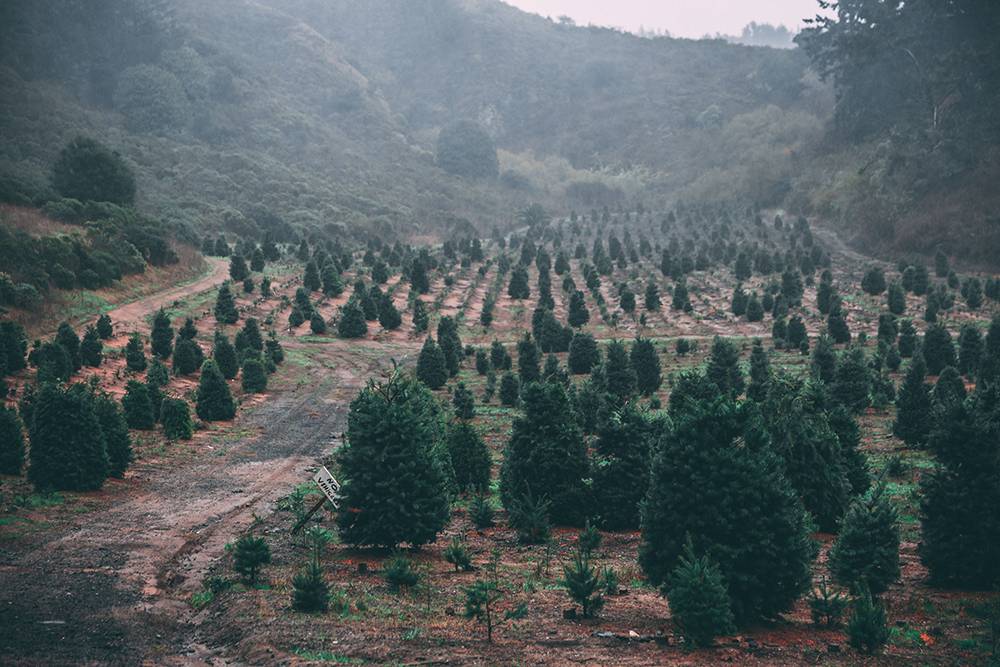
While you can find Christmas trees for sale in parking lots and on sidewalks in many cities, if you want to cut your own tree, or get the freshest one possible, then you’ll want to head to a Christmas tree farm. The National Christmas Tree Association’s Real Christmas Tree Locator is a very handy Google map that allows you to zoom in on your location and filter by pre-cut vs. you-cut, and even look for perks like petting zoos, sleigh rides, and Santa visits.
For a more adventurous tree-cutting experience, the U.S. Forest Service issues very affordable permits ($5 in past years) that allow personal harvest of Christmas trees in select areas of national forests. Go here for more information.
How to cut your own Christmas tree
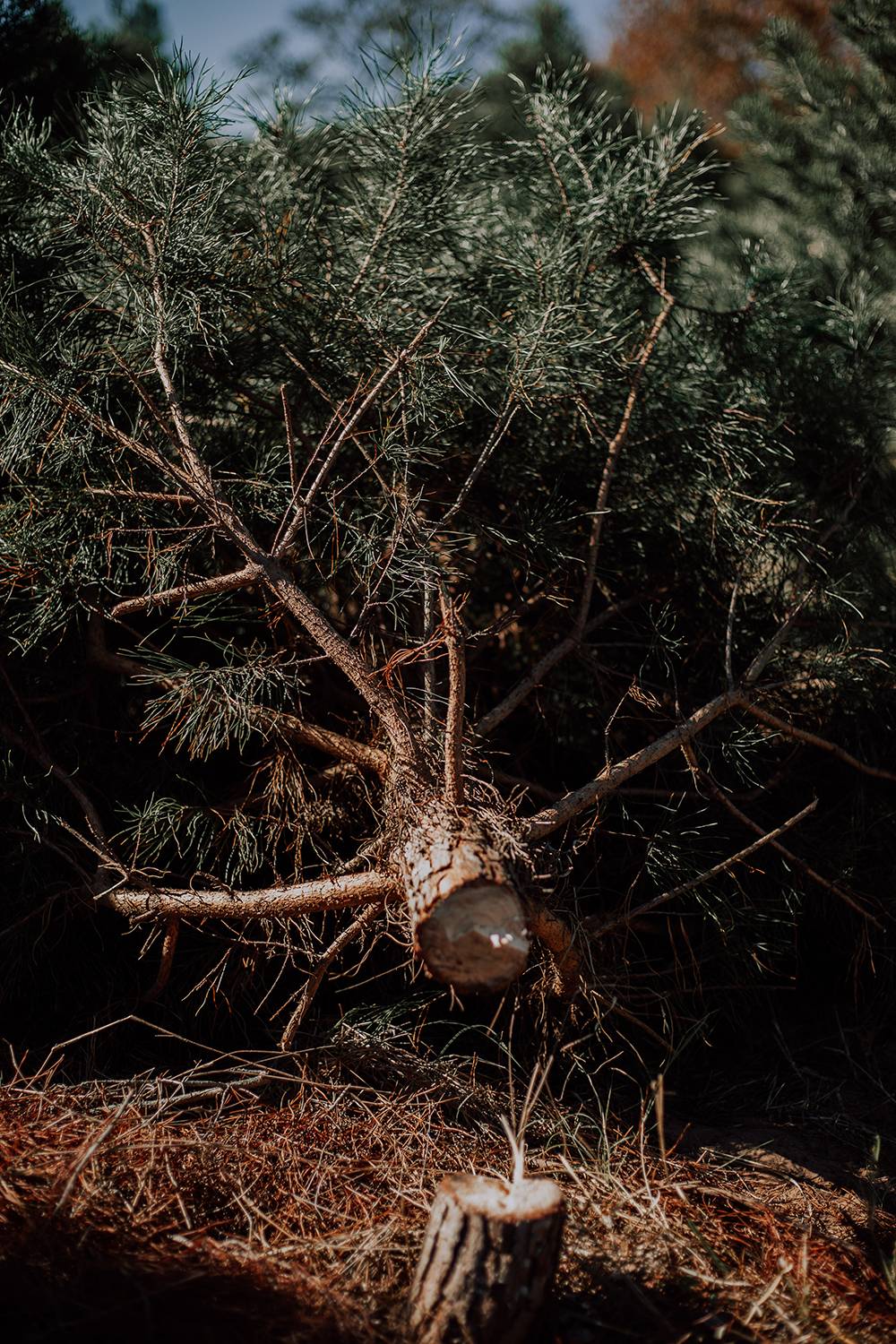
If you’re going to cut your Christmas tree at a farm, check whether you need to bring your own saw, or if they provide them. If you’re bringing your own, a saw designed for cutting trees is best. It’s a good idea to have your own saw at home anyway, since you may need to make a fresh cut to the trunk before you put it in the stand.
Wear heavy gloves and boots. Even if you plan to cut it shorter later, cut the tree as low to the ground as possible. Have an assistant hold the tree so that it doesn’t fall mid-cut, leading to splintering of the trunk.
Make sure that the tree you’re cutting down will fit on top of your car, and that you have the necessary ropes to secure it!
How much do Christmas trees cost?
When buying a tree in person, the cost of a Christmas tree varies from about $25 to $100, depending on where you live, the type of tree you’re buying, and how tall it is.
How to get a live Christmas tree delivered
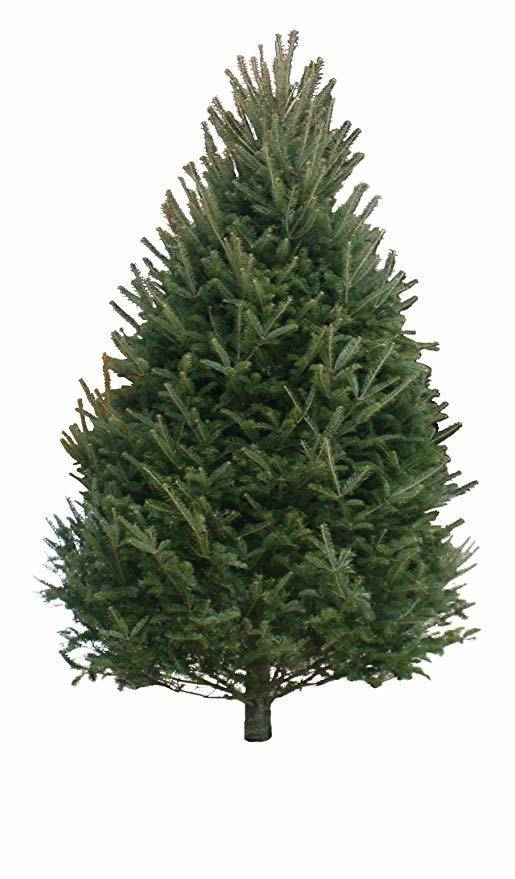
Yes, you really can get everything from Amazon Prime, including a 6-to-7-foot-tall real Christmas tree.
Green Valley Christmas Trees, Christmas Trees Now, or A Tree to Your Door are all other options for ordering live trees online.
Types of real Christmas trees
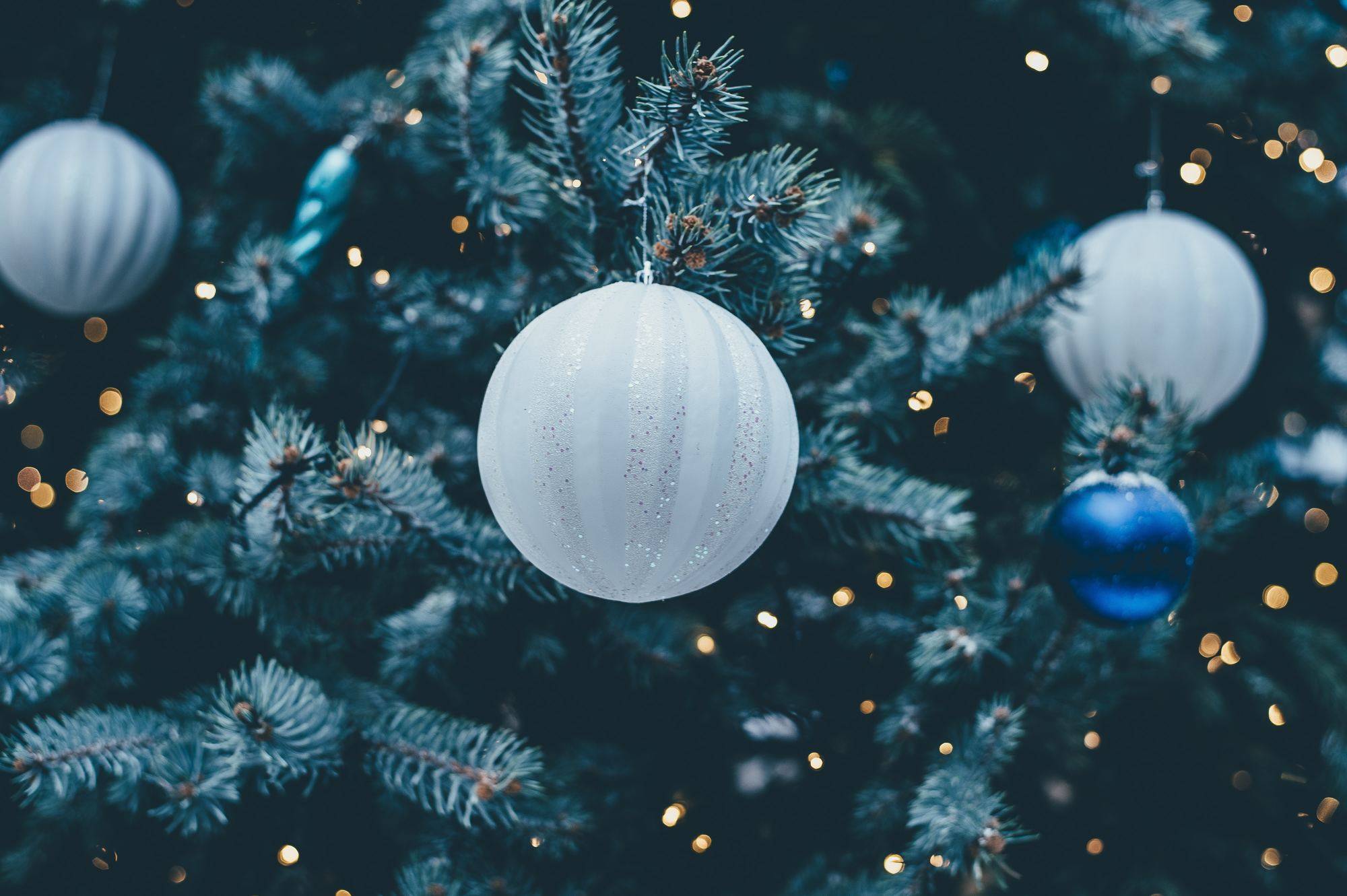
The species of Christmas trees available to you may vary a lot depending on where you live. But here’s a rundown of the pros and cons of some popular types.
Balsam fir: Pros: Long-lasting needles, nice fragrance. Cons: Flexible branches aren’t recommended for heavy ornaments.
Concolor fir: Pros: Good foliage color and needle retention, nice shape and smell. Cons: Slower-growing, so can be more expensive.
Colorado blue spruce: Pros: Good symmetrical form, attractive blue foliage, and good needle retention. Cons: Needles smell unpleasant when crushed.
Douglas fir: Pros: Needles have a sweet fragrance. One of the most popular tree species in the U.S., so it’s easy to find. Cons: Shorter tree, not recommended for heavy ornaments.
Fraser fir: Pros: Good form and needle-retention, pleasant scent, ship well. Cons: Dense and compact look.
Grand fir: Pros: Strong fragrance, softer needles, can grow very tall. Cons: Flexible branches aren’t great for heavier ornaments.
Leyland cypress: Pros: Good for people with sap allergies. Cons: Not much scent.
Noble fir: Pros: Beautiful, long-lasting. Cons: Limbs and needles are on the shorter side.
Scotch pine: Pros: Excellent needle retention, long-lasting. Cons: Often have crooked trunks, and color isn’t great.
Virginia pine: Pros: Easy to find in the South. Cons: Extremely dense foliage, small to medium size.
White pine: Pros: Good needle retention, can grow very tall. Cons: Little aroma, not recommended for heavy ornaments, and wilts easily if it doesn’t get enough water.
White spruce: Pros: Excellent for ornaments, nice color and good, natural shape. Cons: Needles release unpleasant smell when crushed.
Christmas Tree Maintenance
How long does a real Christmas tree last?
With proper maintenance, a freshly-cut Christmas tree will last about 3-5 weeks.
How to take care of a live Christmas tree
The single most important factor in caring for your live Christmas tree is maintaining a high level of moisture. That starts with the reservoir stand, which should hold 1 quart of water per inch of stem diameter. Whittling down a trunk to make it fit a smaller stand is not recommended. It’s a myth that drilling a hole in the trunk improves water uptake, so don’t bother.
If you can’t get it into the stand right away, store your live Christmas tree in a cool location, preferably in a bucket of water. If it has been more than 12 hours since the tree was cut, cut a disk of about 1/4-inch thick from the trunk before putting it in the stand.
If possible, keep the tree away from heat sources like fireplaces, heaters, vents, and direct sunlight when you bring it indoors. The lower the room temperature, the less water the tree will consume.
Watering a real Christmas tree
Check the tree stand every day to make sure that the trunk is still submerged in water. Plain tap water is all a real Christmas tree needs. The temperature of the water doesn’t matter, and it doesn’t need to be boiled first. Adding things like aspirin, soda, sugar, bleach, or anything else to the water is unnecessary, and may be harmful, so just stick with plain water.
How to keep your Christmas tree watered while you’re away
You can buy automatic tree waterers, which can also help you keep your tree watered even while you’re home. You can make your own, disguised as a present under the tree, with the instructions here.
Real Living Christmas Trees
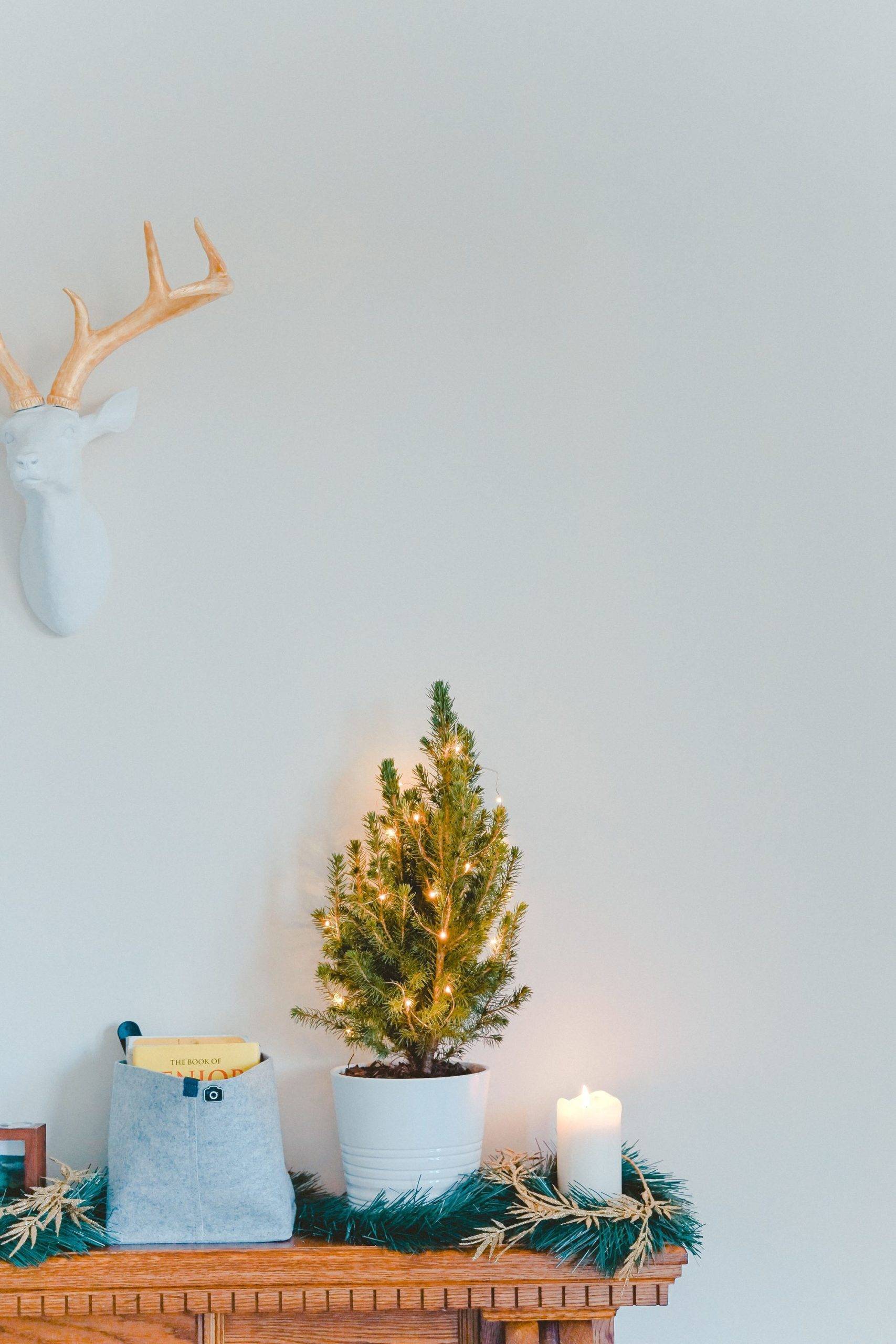
If you don’t want to cut down a tree, a living, potted Christmas tree is another option. In some areas you can rent a potted tree, which you return at the end of the season, and eventually it gets planted outdoors. But if that isn’t available, you can buy a small landscape tree in a container, and reuse it as a living Christmas tree for several years. Just be sure to minimize its time indoors, keeping it inside for no more than 10 days. Decorate, water regularly, then take it back outside to wait for next year.
Tabletop mini living Christmas trees are more common than full-size ones, and you can plant them in your garden at the end of the season. Like full-size cut trees, place living tabletop trees away from radiators and heat sources. Keep the soil slightly moist.
Christmas Tree Problems
How to keep cats out of Christmas trees
If you have a cat with a track record of Christmas tree climbing, you may want to start by trying to put the tree in a room that they don’t have access to. If that’s not possible, use a heavy tree stand, and try to secure the trunk of the tree to a wall or the ceiling with fishing line or rope so that they can’t knock it over. Don’t use tinsel in the tree, and you can try a citrus spray on and around the tree to help deter them. A few citrus peels around the base of the tree may help, too. Tree sap can be toxic to pets, so cover the top of the stand if they try to drink the water, and definitely don’t add any (totally unnecessary) additives to the water.
Should I be worried about Christmas tree mold?
Live Christmas trees carry naturally-occurring mold spores, and bringing them into a warm indoor environment can increase the mold spores in the air. This can be a problem for people with allergies. To minimize the impact, thoroughly hose down your tree outdoors, and let it dry before bringing it inside. Keep a live Christmas tree indoors for no more than a week if you’re sensitive to molds.
Getting Rid of Your Christmas Tree
When to take down your Christmas tree
It’s generally a matter of personal preference when exactly to take down your tree post-Christmas. But if the needles are dry and brittle, it’s definitely time to get rid of it, because it may be a fire hazard.
How to dispose of a Christmas tree
After Christmas, many cities have curbside pick-up or drop-off locations for Christmas trees. If you have yard-waste pick-up, you may be able to cut your tree small enough to fit in your bin. And non-profit civic organizations like the Girl Scouts and Boy Scouts will often pick up trees as a fund-raiser.
Never burn any part of a Christmas tree in a wood stove or fireplace. The wood and needles burn too quickly, and could cause a house fire!
Is there anything else you want to know about real Christmas tree care, or tips you’d like to share?
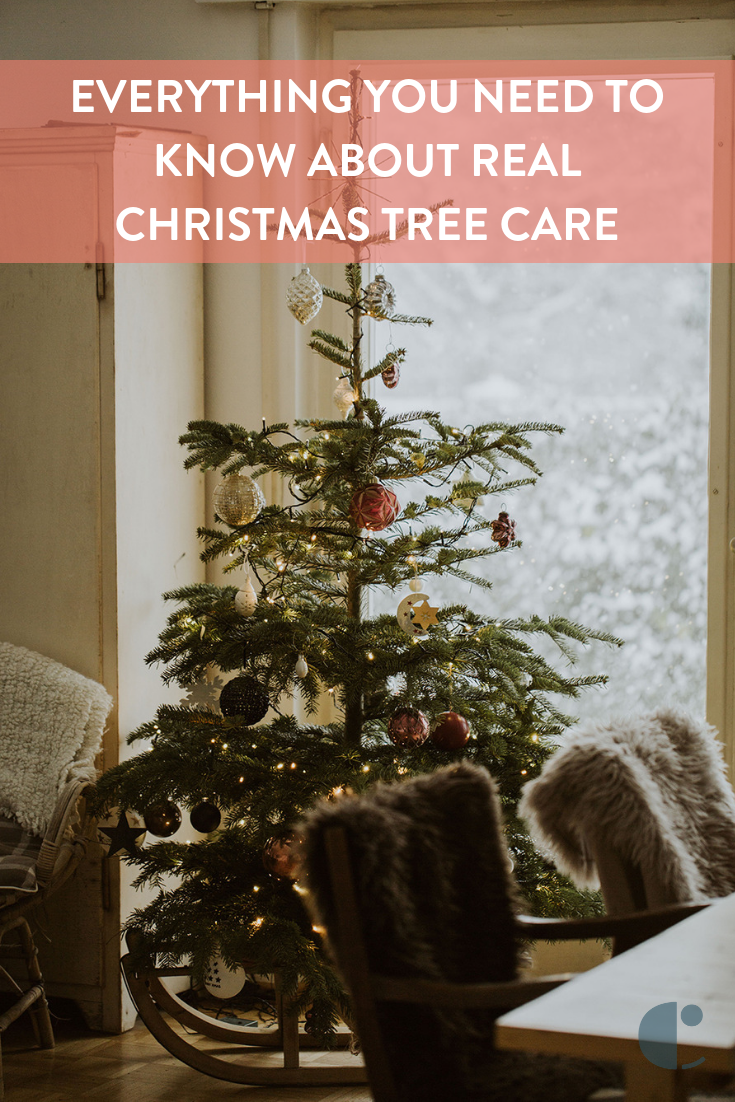
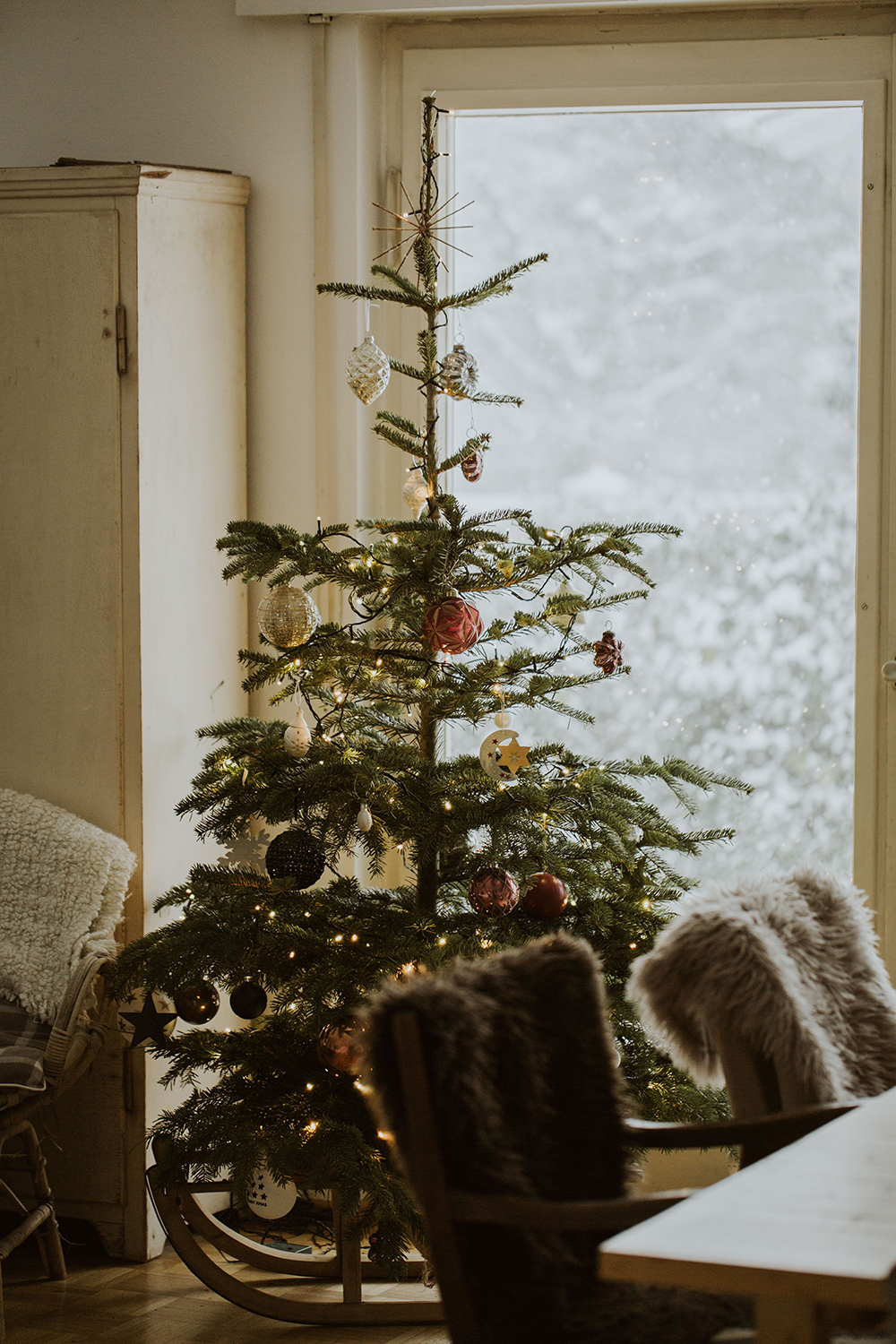
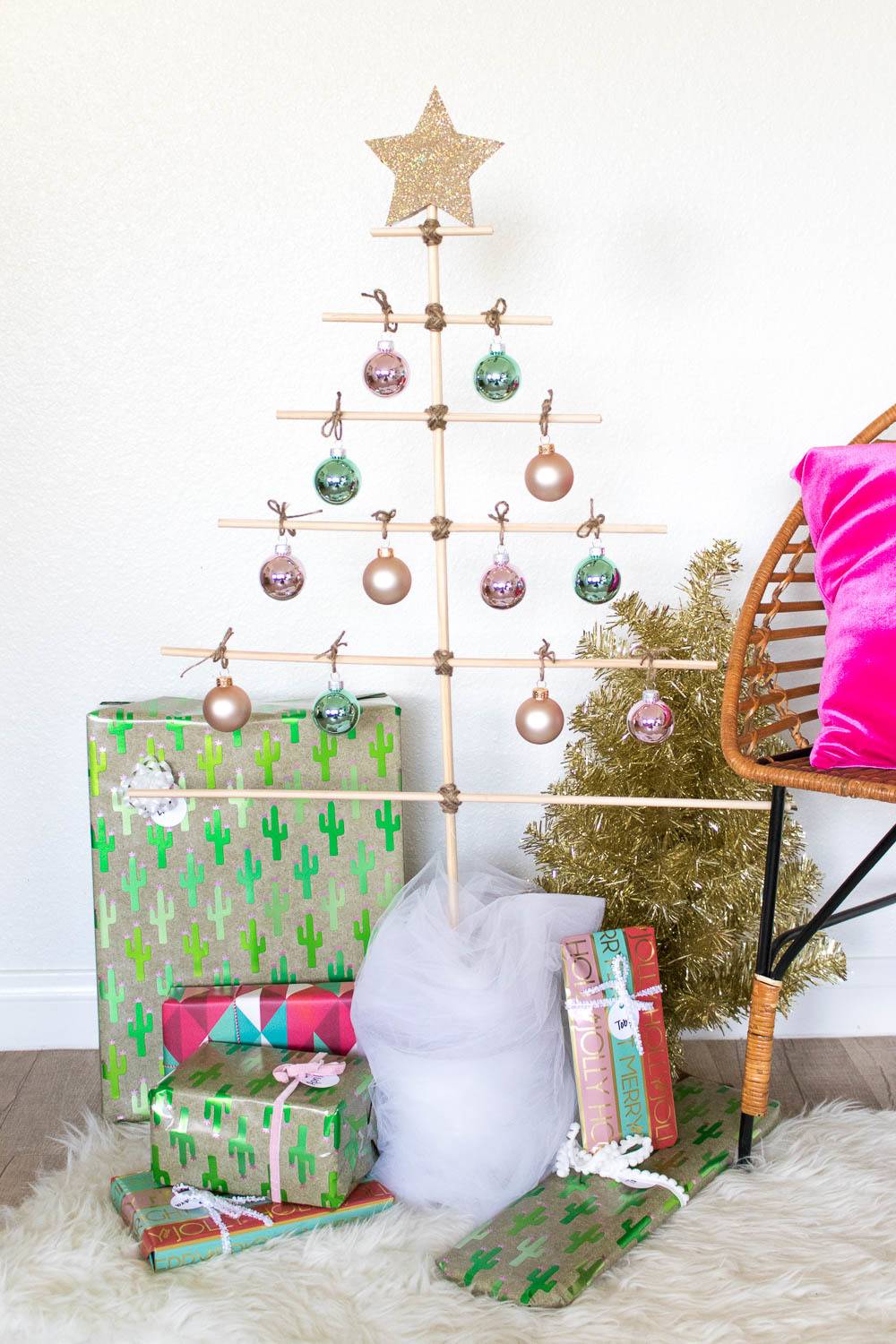
There is nothing better than the myyook.com to sell a product, stuff is much more than anything else from them.
I never knew any of this. Thanks so much. My new tree will look great in front of my new windows from conservation construction of dallas.
Thanks For Sharing informative article,Keep It Up